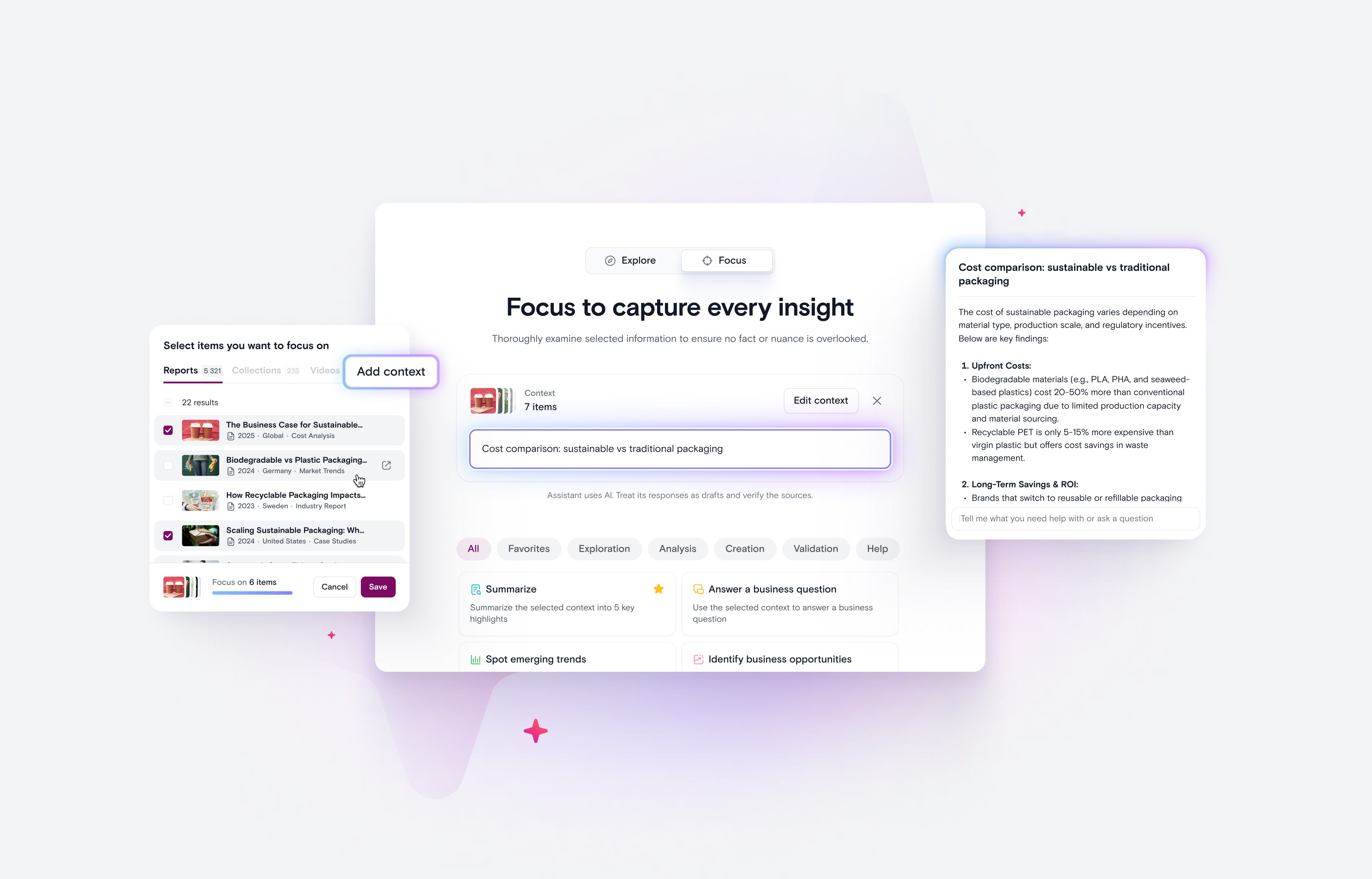How to Share Insights More Effectively

Collaboration among team members and across teams can be difficult to manage. There are any number of challenges related to sharing files, providing access, and enabling efficient cataloging — just to name a few. These obstacles have come to the forefront in recent months, when entire companies have been compelled to transition to remote (or hybrid) work and replace face-to-face interactions with video meetings and electronic communications.
To efficiently utilize everyone’s time and avoid wasting company resources — as well as keeping video meetings to a minimum — it’s in everyone’s best interest to share insights in the most effective way possible.
In this article, we’ll explore a few different methods of knowledge sharing to illustrate how you can share insights more effectively.
Knowledge sharing 101
There are different methods of knowledge sharing, and each is appropriate in certain scenarios.
Method #1: One-to-one sharing
One-to-one sharing is probably the first thing that comes to mind when you hear the term knowledge sharing. It typically involves emailing assets as attachments, or sharing a link directly to a colleague.
It can be really helpful if you’re working at a very small organization, as part of a pair of colleagues working together, or if you’re answering a very specific question from one person. You can think of it as precision sharing.
However, once you go beyond the situations mentioned above, it can become a very ineffective method for knowledge sharing.
Think about it this way: toothbrushes are a great tool for spot cleaning small areas. But if you were to try cleaning all of the floors in your house with one, you would likely be at it for a while.
A drawback to one-to-one sharing is that it’s easy for insights to get lost in the fray, especially if you’re aiming to share with a broader group. For example, if one person in the group doesn’t file or tag the attachment appropriately, they could lose access and not be able to locate the information they need, which slows down everybody’s flow.
Additionally, email inboxes get bogged down quickly. We’ve all been in the situation where we accidentally delete or move a message or attachment that then takes time to locate, or is lost forever.
That’s why while one-to-one sharing is a great method to incorporate into your broader knowledge sharing strategy, relying on it too heavily can end up costing organizations time, money, and productivity.
Method #2: Group sharing
Another way to share research and insights is by sharing with several people at the same time. This might be done using platforms like Google Drive and SharePoint, or via office messaging platforms like Slack or Microsoft Teams. These platforms allow users to upload documents and other materials, such as slide decks, PDFs, and videos, to a shared space where other collaborators have access to the materials.
The problem? As with 1-1 sharing, each asset has the potential to be lost in the shuffle if it’s not correctly tagged, sorted, and cataloged by the individual who uploads it.
For example, if a colleague uploads a document containing insights to Google Drive, it simply sits on the drive wherever the person puts it. Unless the team member places the asset in a shared folder with an agreed-upon naming convention, the data contained within the document might go unnoticed, unfound, and unused — meaning resources are squandered and potentially powerful information goes unused, rendering it inert.
Another challenge arises with search functionality – depending on the tool that is used, search might only return exact keyword matches.
So while sharing with a group can be an effective way to remind colleagues about relevant research and insights, they aren’t a sufficient method on their own.
Method #3: A dedicated knowledge sharing platform
As we’ve explored, one-to-one and group knowledge sharing have their merits, but they shouldn’t be relied on exclusively.
A fantastic way to get the best of both worlds (and then some), is to invest in a dedicated knowledge sharing platform that allows you to combine these traditional methods, while also incorporating new ways to share insights.
For example, Stravito addresses the friction points caused by Methods #1 & #2 by harnessing the power of AI, Natural Language Processing, and machine learning to allow users to upload, store, and share insights — without having to spend time tagging and sorting each document, video, or presentation.
Stravito’s advanced technology searches each information asset for keywords and phrases, and files them into an easily accessible, centralized repository that can then be accessed in a self-service way by stakeholders across an organization — eliminating information silos and allowing insights team members to easily distribute insights.
This method of sorting and storing information reduces the burden on insights managers because it allows all members of a company to access information on their own as a first course of action.
Stravito also offers Collections, which are like Spotify playlists for information. Users can gather relevant data and insights into distinct groupings, making it easier for other team members and stakeholders to access and share knowledge with each other.
Conclusion: Embrace lagom
The Swedish word lagom can be a helpful way to remember the recipe for effective insights sharing. A sort of Goldilocks principle, it can be translated as “just enough”. Not too little, not too much, but lagom.
When it comes to sharing knowledge and insights, it’s exactly this sort of balanced mindset that can help you to share them more effectively.
Effective insights sharing is about combining a variety of methods that suit specific situations exceptionally well. By creating a diverse knowledge sharing toolbox, you minimize the drawbacks that come with relying too heavily on a single way of sharing insights.
The easiest way to do this is with a dedicated insights sharing platform like Stravito, which allows you to tailor the way you share insights to a variety of situations. Additionally, it removes the friction created by unnecessary admin and outdated technology.
The bottom line? For effective insights sharing, choose a tool that allows you to share insights in the best way for different situations. Insights sharing should never be one-size-fits-all.
Related Content

The Role of AI in Decision-Making: Smarter Insights or Faster Mistakes?
Thor Olof Philogène Apr 3, 2025

To Maximize the Value of Your Research, Start with Knowledge Management
Sarah Wiggins Mar 27, 2025

Stravito Enhances GenAI Assistant to Accelerate Time-to-Insight
Charlotte Hilton Mar 20, 2025
.png?width=1200&name=2021%20Blog%20CTAs%20(7).png)